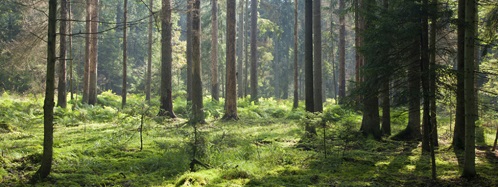At EFIB, it was a surprise to me as a Dutchman, living in a country where agriculture is mainly about food crops, to learn that wood biorefinery is important in the developing biobased economy of the Nordic countries. As was shown by Johanna Buchert, Vice President of VTT, the Technical Research Centre of Finland, and Gudbrand Rødsrud, Technology Director at Borregaard, one of the leading biorefinery companies in Europe.

An entirely new domain
The common denominator in their presentations was the potential of wood components or their derivatives to be used in value added applications. For wood biomass processing, different chemical or biotechnological unit operations can be used. Chemical processing has been developed from the nineteenth century onwards, and has resulted in products like cellophane and viscose, products that later met fierce competition from oil-based plastics and materials. But the use of biotechnical methods, i.e. microbes and enzymes has opened up an entirely new domain of processes and products for biomass. Enzymes can be used for hydrolysis of wood cellulose and hemicellulose into their building blocks (sugars). Microbial cells can in turn convert these sugars to different performance chemicals and further to e.g. polymers.
Biotechnical processing can also be exploited as tool to reduce chemical consumption in conventional pulp and paper manufacture or alternatively to improve the process or product properties. For instance, the consumption of bleaching chemicals needed for bleaching of paper pulp can be reduced by enzyme addition. Enzymes are especially suitable for hydrolysis of wood biomass to its building blocks. New enzymes are being discovered with even more efficient modes of action on e.g. recalcitrant parts of wood. One technical target is to cut down enzyme costs needed for biomass hydrolysis. Using biotechnology, Johanna Buchert said, traditional paper and pulp industries can save energy, improve fibre properties and save chemicals needed in the process. But more importantly, enzymes and biotechnology as a whole offer unique processing opportunities for wood based biorefineries.

A lot of dynamics
Interestingly, the contribution of Gudbrand Rødsrud from industry was a perfect match to Joanna Bucherts presentation from science, although the two had never met and did not know on beforehand what the other would say. He pictured an industry with a lot of dynamics, which experiences constant competition from petroleum-based products, with markets always on the move, and where producers from industrialised countries with higher wage levels have to move to higher-end products in order to stay alive at all.
Here is where biotechnology comes in. Originally a pulping company using classical chemistry, Borregaard has moved a long way towards biotechnology and biorefinery. Its BALI process, for which it constructed a € 18 million pilot plant, produces bioethanol (second generation) and biochemicals from wood and other biomass feedstock. Although bioethanol is the simplest to produce in this process, Borregaard intends to move quickly to biochemicals, the production of which is more profitable in the long run. The BALI process breaks down lignocellulosic biomass into its components; Borregaard also developed processes to handle the lignin fraction and uses this as a raw material for a range of products used in concrete admixtures, car batteries and animal feed.
Proteins for feed
Borregaard, spending a staggering 3% of its income on R&D, also tries to develop products from biomass in the human food range. For instance, it is the world’s only producer of the vanilla flavour vanillin from wood. The company vigorously researches the production of proteins for feed from biomass – ‘too costly at present,’ according to Gudbrand Rødsrud, ‘but we have not given up yet.’
Borregaard has already been running a full scale biorefinery for more than 50 years, and development of the biorefinery concept is in continuous development. If they would succeed in developing biotechnology and biorefinery to an adequate level, this could open up an entirely new and sustainable economic pathway for the Nordic countries with their large wood resource base. The right choice of niche markets in combination with commodity products would be important, in order to combine good margins and good volumes.
